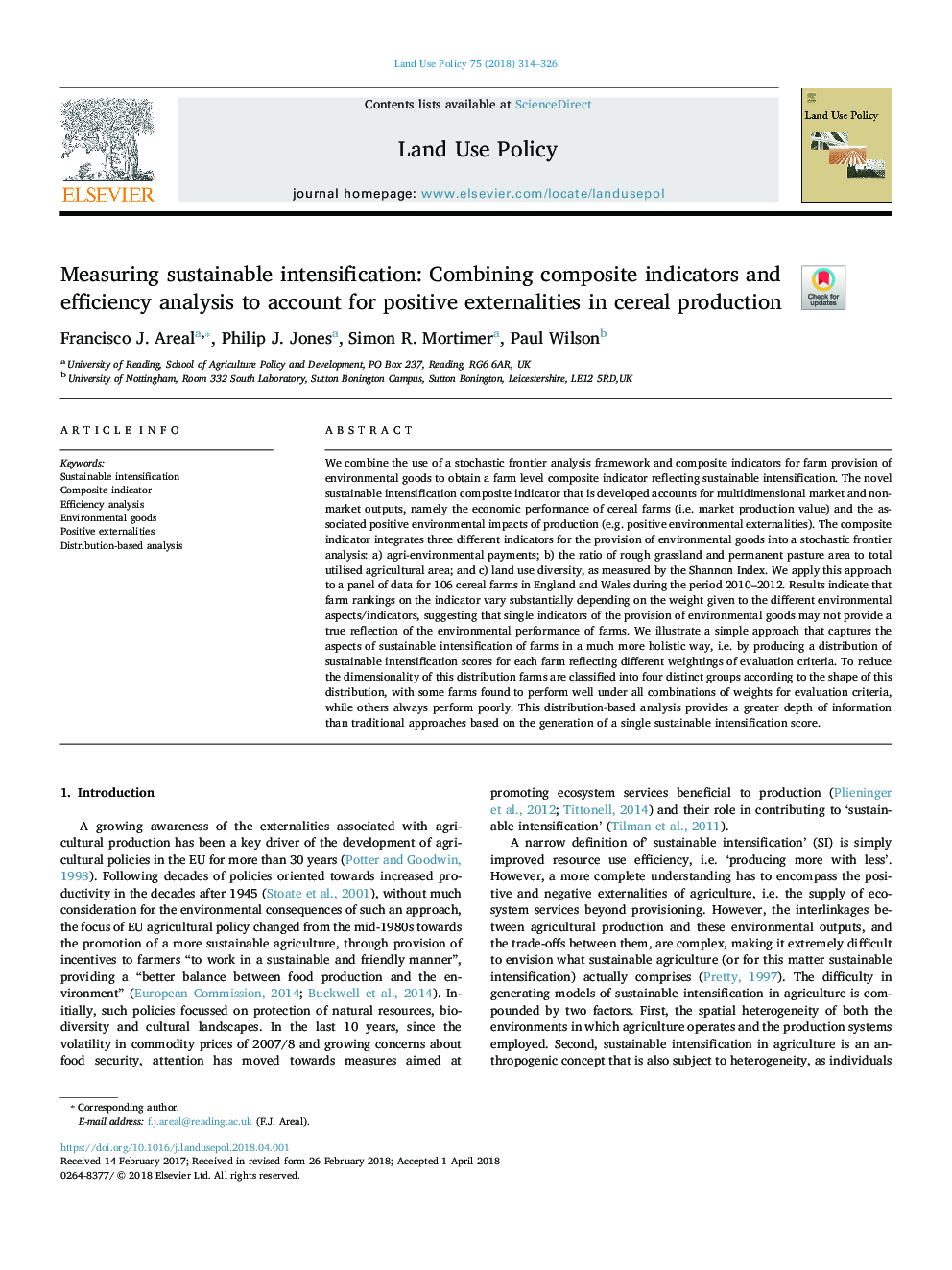| کد مقاله | کد نشریه | سال انتشار | مقاله انگلیسی | نسخه تمام متن |
|---|---|---|---|---|
| 6546398 | 1421808 | 2018 | 13 صفحه PDF | دانلود رایگان |
عنوان انگلیسی مقاله ISI
Measuring sustainable intensification: Combining composite indicators and efficiency analysis to account for positive externalities in cereal production
ترجمه فارسی عنوان
اندازه گیری تشدید پایدار: ترکیب شاخص های کامپوزیتی و تجزیه و تحلیل کارایی برای اثرات جانبی مثبت در تولید غلات
دانلود مقاله + سفارش ترجمه
دانلود مقاله ISI انگلیسی
رایگان برای ایرانیان
کلمات کلیدی
تشدید پایدار، شاخص کامپوزیت تجزیه و تحلیل کارایی، کالاهای زیست محیطی، اثرات جانبی مثبت، تجزیه و تحلیل مبتنی بر توزیع،
موضوعات مرتبط
علوم زیستی و بیوفناوری
علوم کشاورزی و بیولوژیک
جنگلداری
چکیده انگلیسی
We combine the use of a stochastic frontier analysis framework and composite indicators for farm provision of environmental goods to obtain a farm level composite indicator reflecting sustainable intensification. The novel sustainable intensification composite indicator that is developed accounts for multidimensional market and non-market outputs, namely the economic performance of cereal farms (i.e. market production value) and the associated positive environmental impacts of production (e.g. positive environmental externalities). The composite indicator integrates three different indicators for the provision of environmental goods into a stochastic frontier analysis: a) agri-environmental payments; b) the ratio of rough grassland and permanent pasture area to total utilised agricultural area; and c) land use diversity, as measured by the Shannon Index. We apply this approach to a panel of data for 106 cereal farms in England and Wales during the period 2010-2012. Results indicate that farm rankings on the indicator vary substantially depending on the weight given to the different environmental aspects/indicators, suggesting that single indicators of the provision of environmental goods may not provide a true reflection of the environmental performance of farms. We illustrate a simple approach that captures the aspects of sustainable intensification of farms in a much more holistic way, i.e. by producing a distribution of sustainable intensification scores for each farm reflecting different weightings of evaluation criteria. To reduce the dimensionality of this distribution farms are classified into four distinct groups according to the shape of this distribution, with some farms found to perform well under all combinations of weights for evaluation criteria, while others always perform poorly. This distribution-based analysis provides a greater depth of information than traditional approaches based on the generation of a single sustainable intensification score.
ناشر
Database: Elsevier - ScienceDirect (ساینس دایرکت)
Journal: Land Use Policy - Volume 75, June 2018, Pages 314-326
Journal: Land Use Policy - Volume 75, June 2018, Pages 314-326
نویسندگان
Francisco J. Areal, Philip J. Jones, Simon R. Mortimer, Paul Wilson,
